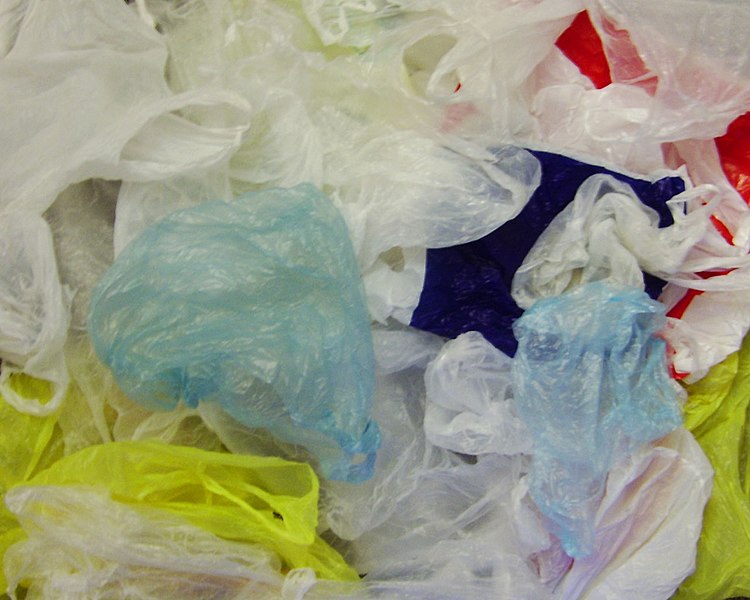Grocery shopping is a fact of life. Whether you’re living in an apartment and cooking all your meals, or just loading up on dorm room snacks, we all have to make pretty regular trips to the shop. But, if you’re not careful, this simple chore can easily become the most wasteful. Our world is screaming for us to shop green.
According to National Geographic, while 800 million people worldwide suffer from hunger, 2.9 trillion pounds of food (enough to feed the hungry twice) are thrown away each year. Food waste is a huge problem globally, and our fixation with perfect-looking produce, pre-prepared foods, and a constant excess of food plays a huge role.
On top of playing a role in world hunger, our food waste, along with our overuse of plastic, is contributing to carbon emissions and global warming, as well as excess use of fuel, water, land, and pesticides.
There are tons of simple ways to lower your impact on the environment when grocery shopping. Try some of these tips next time you shop, and see how much you can cut down your waste. It’s about time that we all shop green.
1. Buy in Bulk

Buying your long-lasting foods in bulk is a great way to avoid excess packaging, food additives, and spending while grocery shopping. These days, you can find anything from beans and grains to oils and maple syrup in the bulk aisle, and some stores will even let you use reusable containers to load up on your kitchen staples.
2. Steer clear of plastic wrappers

One of my biggest grocery store pet peeves is seeing a plastic bag, full of plastic bags, each filled with one “serving size” of snack food. When there are reusable containers and bulk options available, this excess packaging is just unnecessary. Besides, who stops after one pack of Goldfish or fruit snacks anyway?
#SpoonTip: Are individually packaged granola bars your go-to for rushed mornings and packed lunches? Don’t fret! Try making a batch of these homemade bars or energy bites instead. Not only are they cheaper and less wasteful, but you can also customize them to include exactly what you want.
3. Bring your backpack

Attempting to shop green by cutting down on plastic bags doesn’t have to mean it is necessary to buy a whole new set of canvas bags made specifically for grocery shopping (although there are some great ones out there). I bring my backpack to the grocery store and use it to load up on a weeks worth of food. It is easy to carry, hard to forget, and it saves me from keeping a growing pile of single-use plastic in my closet.
Bonus: If you spend a lot of time in the produce aisle, consider investing in some of these reusable produce bags as well for packing up fruit and veggies. It’s an easy and effective way to shop green.
4. Say no to pre-cut veggies

We’ve all been tempted by the brightly colored, perfectly diced, and neatly packaged veggies sitting at the edge of the produce aisle. From chopped butternut squash to spiralized zucchini, grocery stores seem to do all the work for you. However, these prepared veggies often involve a lot of waste and usually cost more than just chopping them yourself.
When stores put these packages together, they are trying to produce perfectly shaped, beautifully colored pieces of produce that will draw customers in. This can mean throwing out slightly bruised or oddly shaped pieces of perfectly delicious and edible food in the process, leading to unnecessary food waste. They also involve a lot of plastic waste packaged and sealed in flimsy containers.
5. Say yes to “ugly” fruit

According to The Guardian, nearly half of all perfectly edible produce in the US ends up in the trash, and a major reason for this is our obsession with “perfect looking” fruit and veggies. Farmers, distributors, and grocery stores are forced to throw away delicious produce, simply because it doesn’t meet the “aesthetic” we expect.
But here’s the thing, produce comes from plants, and like any other living thing, no two plants should look exactly the same. Small bruises, funny shapes, and varying colors do not mean a piece of produce is unsafe to eat. If anything, it means they lived a more exciting life. In fact, a lot of the time the strangest looking ones are the tastiest (looking at you, heirloom tomatoes).
By choosing the ugly duckling of the produce aisle, you will reduce grocery store waste, discourage the “perfect food” obsession, and often find tastier food. By shopping with Imperfect Produce, you could also save some money.
6. Shop in season

There is a reason berries look best during the Summer and apples are cheapest during the Fall. Produce is seasonal, and most all fruits and veggies have a preference for one specific time of year. Although you may see peaches at the grocery store in January, they were most likely flown in from somewhere hot (wasting fuel), and may have been raised by underpaid workers or through unsustainable practices.
By avoiding out-of-season produce and seeking out the stuff that is at its peak in the climate you live in, you will not only be buying cheaper and tastier food, you could also be supporting local farms and sustainable practices. Check this Seasonal Food Guide site to see what’s in season where you are, and look out for locally raised options at your grocery store.
7. Cut back on the meat
Along with being expensive and hard to preserve, meat has a serious impact on the environment. Raising meat is contributing to biodiversity loss and climate change, and requires huge amounts of land and water. According to researcher Garrett Lentz from the University of Otago, cutting back on meat consumption can greatly improve the efficiency of the world’s food system and enable us to feed more people.
Although I don’t expect everyone to become vegetarian, there are many easy ways to cut down on meat, whether that means introducing alternative proteins, enjoying meatless Mondays, or simply making meat a side rather than a main on your plate.
8. Keep inventory

The easiest way to shop a little greener and spend a little less is to always keep track of what you already have. A clear fridge is a clear mind, and knowing exactly what’s in your fridge before heading out to the store will help you avoid the dreaded experience of throwing out forgotten food that has gone rotten or moldy.
Save your money and the planet by buying only what you need, and significantly reduce your contribution to food waste.

Going green is not all about shopping for expensive products at the fancy health food stores. There are plenty of ways to keep the environment in mind when perusing around your local grocery store, and without spending more. So, the next time you load up on a week’s worth of food, consider trying some of these tips and tricks for keeping your weekly grocery run as green and low-waste as possible.



